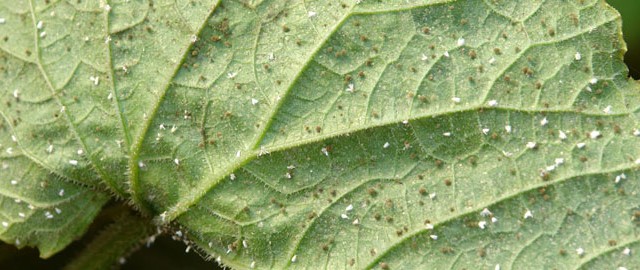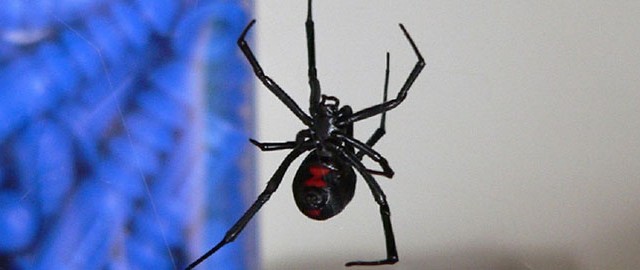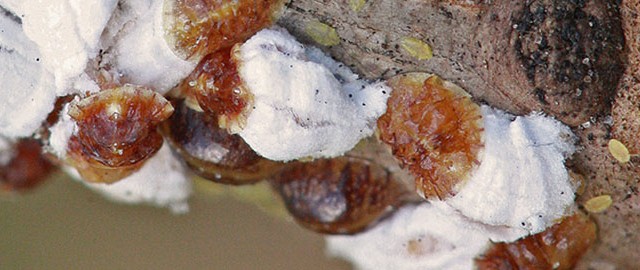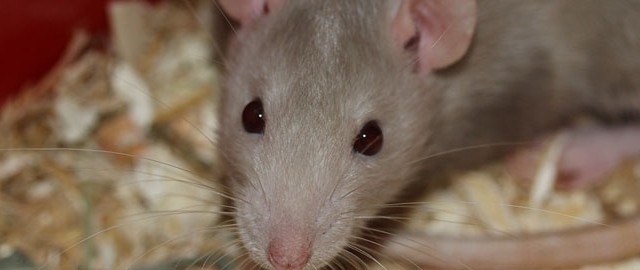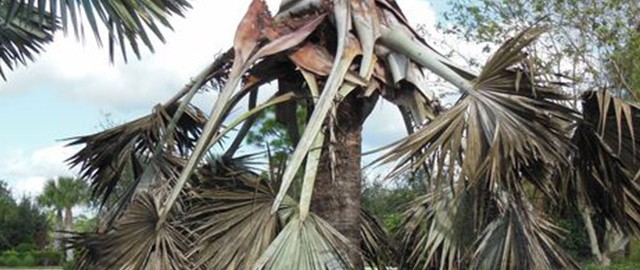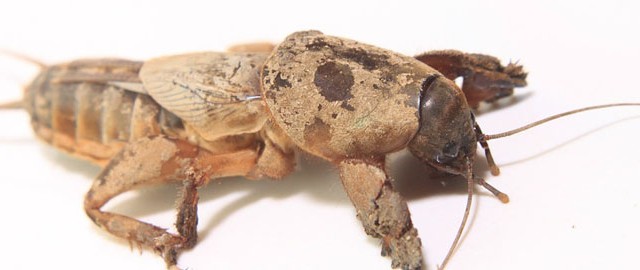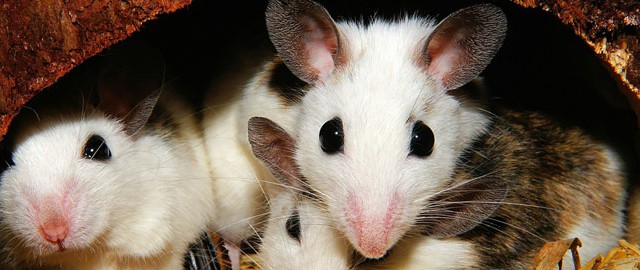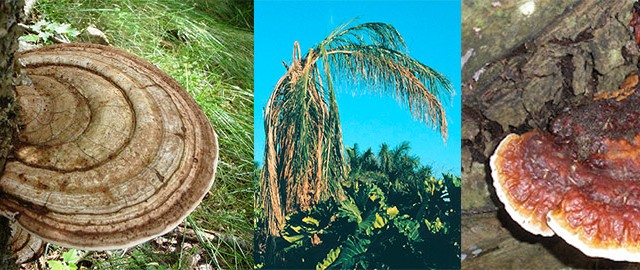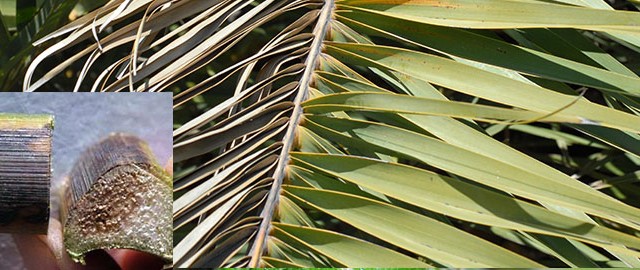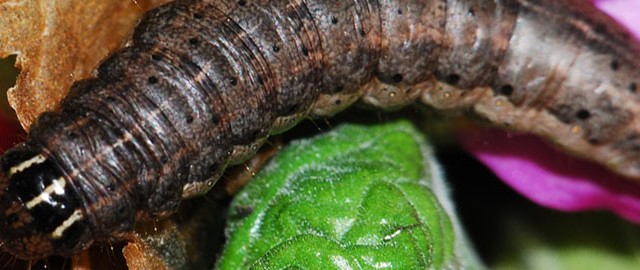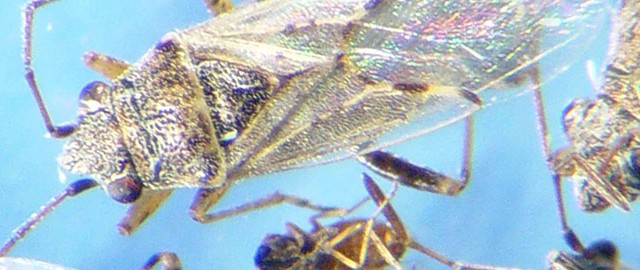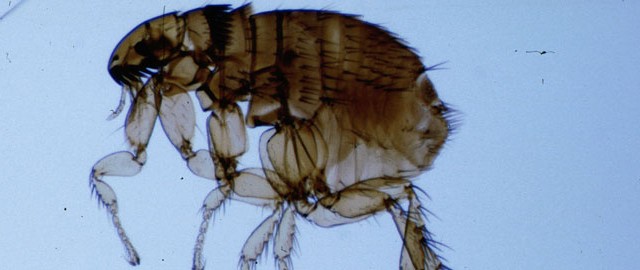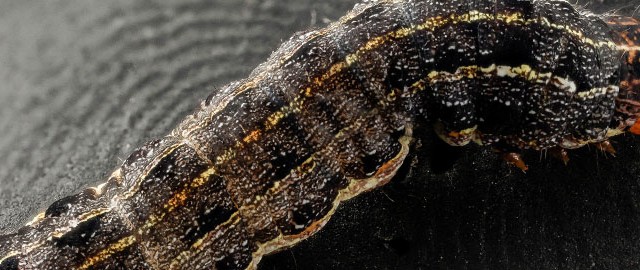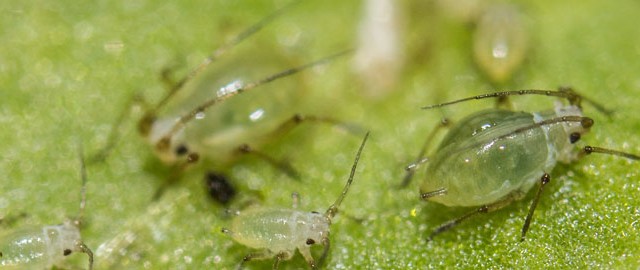Pest Gallery
- Date
- December 10, 2014
Earwigs will enter homes to hide, but they don’t breed because the eggs and nymphs cannot tolerate long periods of dryness (low humidity). When inside homes, earwigs may be mistaken for cockroaches, as they tend to resemble each other when it is dark. They generally occur in groups and once inside a home they will feed on crumbs of human food as well as cat and dog food. Earwigs are attracted to outdoor lighting. Earwigs feed on a wide range of food sources. They will eat aphids, mites, and insect eggs. However, they also feed on the flowers of plants including marigolds, petunias, dahlias, and hostas. Earwigs will eat small holes in plant leaves and flowers during the night. Leaves and petals have a ragged appearance with irregular-shaped holes. Seedlings and flowering plants can be severely damaged or killed by high earwig populations. Earwigs also eat pollen, fungi, and lichens.- Date
- December 12, 2014
There are a great many species of cutworms. While they all feed on plants by chewing, they vary as to damage done and host plants preferred. Generally they destroy more of the plant than they eat. Their numbers vary greatly from year to year and, when numerous, may destroy as much as 75% of a crop. Cutworms injure plants in four major ways: Solitary surface cutworms cut off young plants at or slightly above or below the soil line, sometimes dropping the severed plants into their burrows. Because most of the plant is not eaten, these cutworms do great damage, attacking and felling new plants nightly. The black, bronzed, clay-backed and dingy cutworms are in this group. Climbing species, usually the variegated and spotted cutworms, climb the stem of trees, shrubs, vines, and crops and eat the leaves, buds and fruit. Subterranean species, particularly the pale western and glassy cutworms, remain in the soil and feed upon roots and underground parts.- Date
- December 12, 2014
Chinch bugs are most damaging to Floratam Grass. You may see them on grasses such as zoysia, Bermuda, and centipede, but infestations usually occur where high populations have built up on St. Augustine grass. Adult chinch bugs are about one-fifth of an inch long and black with white wings folded over their backs. The insect mates early in the season when the temperature reaches 70 degrees Fahrenheit. The female lays eggs on roots, stems, leaves, leaf sheaths or crevices in nodes and other protected places. Eggs are laid over a 2 to 3 week period, with one female laying as many as 500 eggs. The young chinch bugs ( called nymphs) develop into adults in four to six weeks. Nymphs are yellow upon hatching but soon turn red and have a light colored band across their abdomens. With each molt, nymphs more closely resemble the adults. There are 2 to 4 generations per year. The chinch bugs insert their slender beak into the grass and suck the plant juices. As the chinch bug sucks the plant juices, it releases a toxin that causes yellowish to brownish patches in turf. Typical injury appears as spreading patches of brown, dead grass. This […]- Date
- December 12, 2014
If you have a pet it is likely that you will get fleas on your pet or in your home at sometime, and that these fleas will get on and bite you or your loved ones. The most common flea found on pets and in homes in Florida is the cat flea. If your pet scratches itself often or you notice flea bites you may be having a flea infestation. Not only are fleas an irritating biting nuisance they can be harmful to you and your pets. They can cause anemia and hot spots. Some people and pets suffer from flea allergy dermatitis, lasting up to five days and characterized by intense itching, reddening at the bite site, hair loss and secondary infection. Cat fleas also serve as hosts of the dog tapeworm. This intestinal parasite is transmitted to the pet while grooming via ingestion of an adult flea carrying a tapeworm cyst.- Date
- December 12, 2014
Armyworms, which attain a length of 1/2 inches, are also caterpillars of moths. Their bodies are greenish when small but become brown when fully grown. Several stripes are usually apparent, extending from the head to the rear. The adult is a mottled brownish-gray moth with a wingspan of nearly l l/2 inches. Life Cycle and Diagnosis: Moths lay clusters of eggs on grass blades, lawn furniture, white or light colored walls and other objects near lawns. Caterpillars hatch and begin to feed on the turf. Damaged turf appears ragged with individual blades showing signs of chewing damage. When numerous, they may devour the grass down to the ground. Caterpillars pupate in the soil. The moths emerge within a couple of weeks. They are active mainly at night. There are three to six generations a year. As with sod webworms, time insecticide applications to control armyworms during the early evening when caterpillars are feeding on the surface of the turf.- Date
- December 12, 2014
The most common aphids in Florida citrus are the green citrus aphid (Aphis spiraecola), the cotton or melon aphid (A. gossypii), and the brown citrus aphid (Toxoptera citricida). Brown citrus aphid is particularly important as a vector of citrus tristeza virus. Aphids are dependent on the availability of newly expanding leaves for their development and reproduction, so these insects may be problems during periods of new citrus growth, primarily spring and fall. Aphids are largely controlled by many generalist natural enemies such as ladybeetles, hoverflies, and lacewings, that normally maintain their populations, and those of other flush-feeding insects, below levels that warrant treatment in producing groves. Excessive honeydew accumulation on leaves will result in the growth of sooty mold fungus that blocks light and reduces photosynthetic activity. However, mature groves sustain little damage and should not need treatment. Treatment is warranted only in young groves (< 3 yrs old) if a large portion (i.e. > 50%) of expanding terminals is infested. Surveys for aphids should be conducted early in flushing cycles when most terminals are still in the feather stage. Systemic materials, such as Temik or Admire, applied to the soil will give good control with minimal impact on beneficial […]

